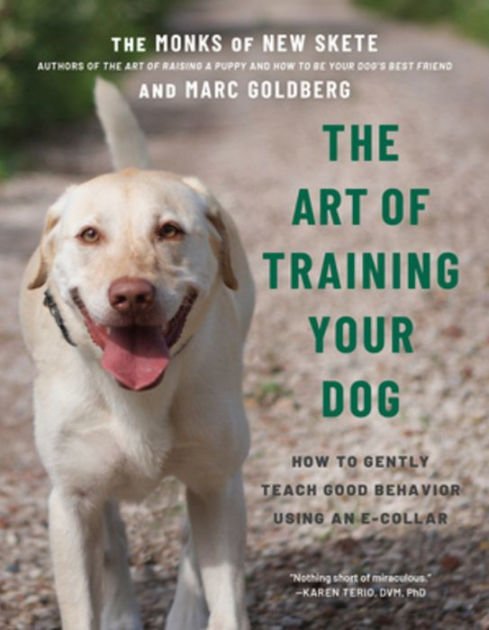Table of Contents
If you’re a dog lover in Singapore, you’ve probably wondered about the secrets behind becoming a successful dog trainer. Whether you already have a furry companion or you’re simply passionate about working with dogs, mastering the art of dog training can open up a world of opportunities. In this article, we’ll explore the ins and outs of becoming a dog trainer in Singapore, uncovering valuable tips and expert advice to help you embark on this rewarding journey. So, put on your training hat and get ready to unleash your potential in the world of dog training!
The Importance of Dog Training

Benefits of Dog Training
Dog training is an essential aspect of responsible pet ownership that offers numerous benefits for both you and your furry companion. A well-trained dog is a happy and well-adjusted member of the family, creating a harmonious living environment for everyone involved. Here are some of the key benefits of dog training:
-
Improved Communication: Through training, you can establish clear and effective communication channels with your dog. This understanding allows you to communicate your expectations and commands, leading to better obedience and cooperation from your dog.
-
Enhanced Bonding: Training sessions provide an opportunity for you and your dog to bond on a deeper level. The shared experience of learning and achieving goals together strengthens the emotional connection between you and your furry friend.
-
Promotes Safety: A well-trained dog is more likely to obey commands, reducing the risk of accidents or dangerous situations. Basic obedience commands like sit, stay, and recall can potentially save your dog’s life in hazardous situations.
-
Socialization and Behavioral Development: Dog training exposes your pet to various social situations and helps them develop appropriate behaviors when interacting with humans and other animals. This socialization is crucial for preventing behavioral issues and ensuring a well-rounded and friendly dog.
-
Reduced Stress: When your dog is well-behaved and responsive to commands, it alleviates stress for both you and your pet. A calm and obedient dog is easier to handle, leading to a more relaxed and enjoyable relationship.
Creating a Strong Bond with Your Dog
A strong bond between you and your dog is the foundation for a happy and fulfilling companionship. Building this bond goes beyond mere obedience and requires time, patience, and understanding. Here are some tips to help create a strong bond with your dog:
-
Spend Quality Time Together: Dedicate regular time to engage in activities that both you and your dog enjoy. This could include playing games, going for walks, or simply cuddling on the couch. The more positive experiences you share, the stronger your bond will become.
-
Positive Reinforcement: Use positive reinforcement techniques during training sessions to reward your dog’s good behavior. This positive reinforcement strengthens the emotional connection between you and your furry friend and reinforces desirable behaviors.
-
Be Consistent: Dogs thrive on routines, so establish consistent rules and expectations from the beginning. Stick to a set schedule for feeding, exercise, and training to provide a sense of structure and security.
-
Practice Patience: Remember that training takes time and patience. Be understanding and supportive throughout the learning process, avoiding frustration or impatience. Celebrate small victories and don’t get discouraged by setbacks.
-
Build Trust: Establishing trust is crucial in any relationship, and the same applies to your bond with your dog. Build trust by being reliable, consistent, and fair. Avoid physical punishment, as it can erode trust and cause fear or aggression.

Understanding Dog Behavior
To effectively train your dog, it is essential to understand their natural behavior and communication methods. Dogs rely on a combination of body language, vocalizations, and scent to convey their emotions and intentions. Here are two key concepts to help you understand dog behavior:
Canine Communication
Dogs communicate through various signals, providing insights into their emotions and intentions. Understanding canine body language can help you interpret your dog’s behavior and respond appropriately. Some common communication cues include:
-
Tail Wagging: A wagging tail can indicate happiness or excitement, depending on the speed and position. Ensure you consider other accompanying body language to interpret the message correctly.
-
Ears: The position and movement of a dog’s ears can convey their level of attentiveness, fear, or relaxation. Pricked ears typically indicate alertness, while flattened or backward ears may indicate fear or submission.
-
Barking: Dogs use barking as a vocal expression of various emotions, such as excitement, fear, or alertness. Each type of bark may have distinct qualities, such as pitch, volume, and duration, which can help you decipher their message.
-
Body Posture: The way a dog holds its body provides valuable insights into their mood and intentions. For example, a relaxed and loose body posture signifies comfort, while a rigid or tense body suggests fear or aggression.
Pack Dynamics
Dogs are pack animals, and understanding the dynamics of their natural social structure can provide valuable insights into training approaches. In a pack, there is a hierarchy established through dominant and submissive behaviors. While domesticated dogs no longer live in packs, they still exhibit some of these behaviors.
As a responsible dog owner, it is crucial to establish yourself as the pack leader and provide clear guidance and boundaries. This helps your dog feel secure and disciplined, as they know their place within your family unit. By understanding pack dynamics, you can effectively establish yourself as the leader in a respectful and gentle manner.
Basic Dog Training Techniques
When it comes to dog training, there are several proven techniques that yield positive results. These techniques prioritize positive reinforcement and strengthen the bond between you and your dog. Here are three commonly used dog training techniques:
Positive Reinforcement
Positive reinforcement is a technique that rewards desired behavior to encourage its repetition. It involves providing treats, verbal praise, or affection whenever your dog performs an action correctly. By associating their good behavior with positive outcomes, dogs are more likely to repeat the behavior.
To effectively use positive reinforcement, ensure you provide rewards immediately after the desired behavior occurs. This allows your dog to form a clear connection between their actions and the positive reinforcement.
Clicker Training
Clicker training is a method that uses a small handheld device called a clicker to mark desired behavior. The clicker emits a distinct sound that acts as a “bridge” between the behavior and the reward. Through consistent repetition, dogs quickly learn to associate the click with positive outcomes.
To start clicker training, introduce your dog to the sound of the clicker by associating it with treats or rewards. As your dog makes progress in their training, use the clicker to mark and reinforce specific behaviors, signaling to them that they have performed correctly.
Marker Training
Marker training is similar to clicker training but instead uses a verbal cue, such as a specific word or sound, to mark desired behavior. This technique allows for flexibility as the verbal cue can be given instantly, regardless of whether you have a clicker on hand.
To implement marker training, choose a distinct and consistent verbal cue, such as “yes” or “good,” and pair it with rewards when your dog displays the desired behavior. The marker serves as an instant communication tool, letting your dog know they have done well and a reward is coming.

Choosing a Dog Trainer
If you prefer to have a professional guide you in training your dog, choosing the right dog trainer is crucial. Here are some factors to consider when selecting a dog trainer:
Certification and Experience
Look for trainers who have obtained certifications from reputable organizations, such as the Certification Council for Professional Dog Trainers (CCPDT) or the International Association of Animal Behavior Consultants (IAABC). These certifications indicate that the trainer has met specific standards and has demonstrated knowledge and proficiency in dog training techniques.
Additionally, consider the trainer’s experience working with dogs of various breeds and temperaments. Experience can contribute to the trainer’s ability to tailor training methods to suit different dogs’ needs and effectively address behavioral issues.
Training Methods
Ensure the trainer utilizes positive reinforcement-based training methods that prioritize your dog’s emotional well-being. Avoid trainers who employ punitive techniques or use aversive tools like shock collars, choke chains, or prong collars. Positive reinforcement-based training methods are scientifically proven to be more effective, humane, and ethical.
Client Testimonials
Review client testimonials and seek recommendations from trusted sources to gain insight into the trainer’s success rate and approach. Positive feedback from previous clients indicates the trainer’s effectiveness in achieving desired results and maintaining a positive training environment.
By considering these factors, you can find a dog trainer who aligns with your training goals, values, and meets your dog’s specific needs.
Puppy Training
Puppyhood is a critical time for training and socialization. Establishing good habits and behaviors at a young age sets your puppy up for a lifetime of success. Here are some key areas to focus on during puppy training:
House Training
House training, also known as potty training, is an essential aspect of puppy training. It involves teaching your puppy where and when to eliminate.
Start by establishing a consistent routine for feeding and taking your puppy outside to a designated potty area. Watch for signs that your puppy needs to eliminate, such as sniffing or circling, and promptly take them to the designated spot.
When your puppy eliminates in the correct area, reward them with praise and treats. Consistency, patience, and positive reinforcement are crucial for successfully house training your puppy.
Socialization
Socialization plays a vital role in shaping your puppy’s behavior and temperament. Exposing them to various people, animals, environments, and experiences at a young age helps them develop confidence, reduce fear, and become well-adjusted adults.
Socialization can include supervised interactions with other vaccinated and friendly dogs, meeting different people, and exposing your puppy to various sights, sounds, and surfaces. Always ensure that the experiences are positive, enjoyable, and gradual to prevent overwhelming your puppy.
Basic Commands
Teaching basic commands lays the foundation for obedience and communication with your puppy. Start with simple commands like “sit,” “stay,” “come,” and “lie down.” Use positive reinforcement techniques to reward your puppy for correctly following the commands.
Break the training sessions into short, fun, and engaging activities to keep your puppy’s attention and prevent boredom. Consistency, repetition, and patience are key to successfully teaching your puppy basic commands.

Obedience Training
Obedience training is essential for creating a well-behaved and obedient dog. It involves teaching your dog to respond reliably to a set of commands and cues. Here are some key aspects of obedience training:
Teaching Basic Commands
Building on the foundation of basic commands learned during puppy training, expand your dog’s repertoire with additional commands like “heel,” “leave it,” “drop it,” and “wait.” These commands provide better control and ensure your dog’s safety in various situations.
Use positive reinforcement techniques to reward your dog for correctly following the commands. Consistent practice and repetition are crucial for reinforcing the commands and ensuring your dog’s obedience.
Leash Training
Leash training is another essential aspect of obedience training. Teaching your dog to walk politely on a leash enhances both their safety and your enjoyment of walks. Start by introducing your dog to the leash and collar or harness in a positive and gradual manner.
Practice loose leash walking by encouraging your dog to walk beside you without pulling or lunging. Use treats, verbal praise, or other rewards to reinforce desirable behavior. With consistent training and positive reinforcement, your dog will learn to walk calmly and obediently on a leash.
Recall Training
Recall training, also known as coming when called, is a crucial command for your dog’s safety and your peace of mind. Begin recall training in a calm and distraction-free environment and gradually increase the level of distractions as your dog progresses.
Use positive reinforcement, making coming to you a highly rewarding experience for your dog. Avoid scolding or punishing your dog if they fail to come when called, as this can create negative associations and damage the recall training process.
Behavioral Issues and Solutions
Even with proper training and socialization, dogs may occasionally exhibit behavior issues. It is essential to address these issues promptly to ensure the well-being of both you and your dog. Here are some common behavioral issues and potential solutions:
Aggression
Aggression in dogs can be caused by various factors, such as fear, anxiety, territorial instincts, or past traumatic experiences. It is essential to consult with a professional dog trainer or behaviorist to identify the underlying cause and develop a tailored treatment plan.
Treatment may involve a combination of behavior modification techniques, desensitization and counterconditioning exercises, and positive reinforcement methods. The key is to address the root cause of the aggression and provide your dog with the necessary skills to cope with their triggers.
Separation Anxiety
Separation anxiety is a common issue that manifests when dogs become distressed or anxious when left alone. Symptoms may include excessive barking, destructive behavior, pacing, or attempts to escape.
Addressing separation anxiety requires patience and a gradual, progressive approach. Consider crate training, leaving your dog with engaging toys or puzzle feeders, and desensitizing them to your departures. Consultation with a professional dog trainer or behaviorist can provide valuable guidance in managing and resolving separation anxiety.
Excessive Barking
Excessive barking can be a nuisance and disrupt the harmony of your household. It can be caused by boredom, anxiety, attention-seeking, or territorial instincts. Identifying the underlying cause is crucial for effectively addressing excessive barking.
Create a stimulating environment for your dog that includes physical exercise, mental stimulation, and appropriate chew toys. Active supervision and proactive prevention can help redirect your dog’s attention before excessive barking occurs. Combined with positive reinforcement, consistent training, and patience, you can reduce and manage excessive barking.

Specialized Training
Beyond basic obedience, specialized training can provide opportunities for dogs to excel in various fields. Here are three areas of specialized training:
Service Dog Training
Service dog training focuses on teaching dogs to assist individuals with disabilities. This specialized training enables dogs to perform specific tasks, such as guiding visually impaired individuals, alerting individuals with hearing impairments, or assisting individuals with mobility challenges.
Service dog training requires professional guidance and expertise due to the specific skills and behaviors required. Accredited organizations and trainers specializing in service dog training can provide the necessary training and assessments.
Therapy Dog Training
Therapy dog training prepares dogs for providing comfort, support, and companionship to individuals in various settings, such as hospitals, nursing homes, or schools. These dogs undergo training to ensure they are well-behaved, calm, and responsive to commands, allowing them to interact with different individuals while providing emotional support.
Certification and evaluation through reputable therapy dog organizations are typically required to ensure the dog’s suitability for this specialized role.
Sports and Agility Training
Sports and agility training involve teaching dogs to navigate obstacle courses, perform tricks, or participate in competitive events. These activities provide mental and physical stimulation for dogs, promote their overall fitness, and strengthen the bond between dogs and their owners.
Sports and agility training require specialized equipment, professional guidance, and appropriate physical conditioning for the dog. Dog owners interested in this type of training can join local dog sports clubs or seek the expertise of professional trainers.
Training for Specific Breeds
Recognizing that each breed possesses unique characteristics and traits is essential for tailoring training methods to suit their specific needs. Here are some considerations for training specific breeds:
Understanding Breed Characteristics
Different dog breeds have distinct temperaments, energy levels, and natural instincts. Understanding these breed-specific characteristics is crucial for successful training. For example, herding breeds may require mental stimulation and tasks to fulfill their natural instincts, while toy breeds may need gentle socialization to prevent fear-based behaviors.
Be sure to research and understand your dog’s breed characteristics to tailor training methods effectively and address any specific needs they may have.
Tailoring Training Methods
Training methods that work well for one breed may not be as effective for another. Be flexible and open to adapting training techniques to suit your dog’s breed-specific traits. For example, some breeds may respond better to food rewards, while others may be more motivated by play or praise.
Consult with professional trainers or breed-specific training resources to learn about effective training methods tailored to your dog’s breed.
Singapore Dog Training Services
In Singapore, there are various dog training services available to help you enhance your dog’s behavior and training skills. Here are some commonly offered services:
Private Training Sessions
Private training sessions provide one-on-one attention and personalized guidance from a professional dog trainer. These sessions can be tailored to address specific training goals or behavioral issues. Private training allows for focused attention on your dog’s individual needs and progress.
Group Training Classes
Group training classes offer a social and interactive training experience for both you and your dog. These classes typically involve a small group of dog owners and their dogs, allowing for controlled socialization and training amidst distractions. Group classes often cover basic obedience commands and focus on improving your dog’s responses in real-life situations.
Boarding and Training Options
Some dog training service providers offer boarding and training programs. These programs involve your dog staying with a professional trainer for a specified duration, during which they receive intensive training and behavioral modification. Boarding and training options are ideal for busy dog owners who may not have the time or expertise to handle extensive training themselves.
Research the available options and consider your dog’s specific needs and your training objectives when selecting a dog training service in Singapore.
In conclusion, dog training is an essential aspect of responsible pet ownership that offers numerous benefits, including improved communication, enhanced bonding, and a well-behaved pet. Understanding dog behavior, utilizing positive reinforcement-based training methods, and choosing the right dog trainer are crucial for successful training outcomes. Whether you have a puppy, need obedience training, or require assistance with behavioral issues, there are various training techniques and specialized training options available. By investing time, patience, and effort into training, you can cultivate a strong bond with your furry companion and ensure a happy and harmonious relationship.



